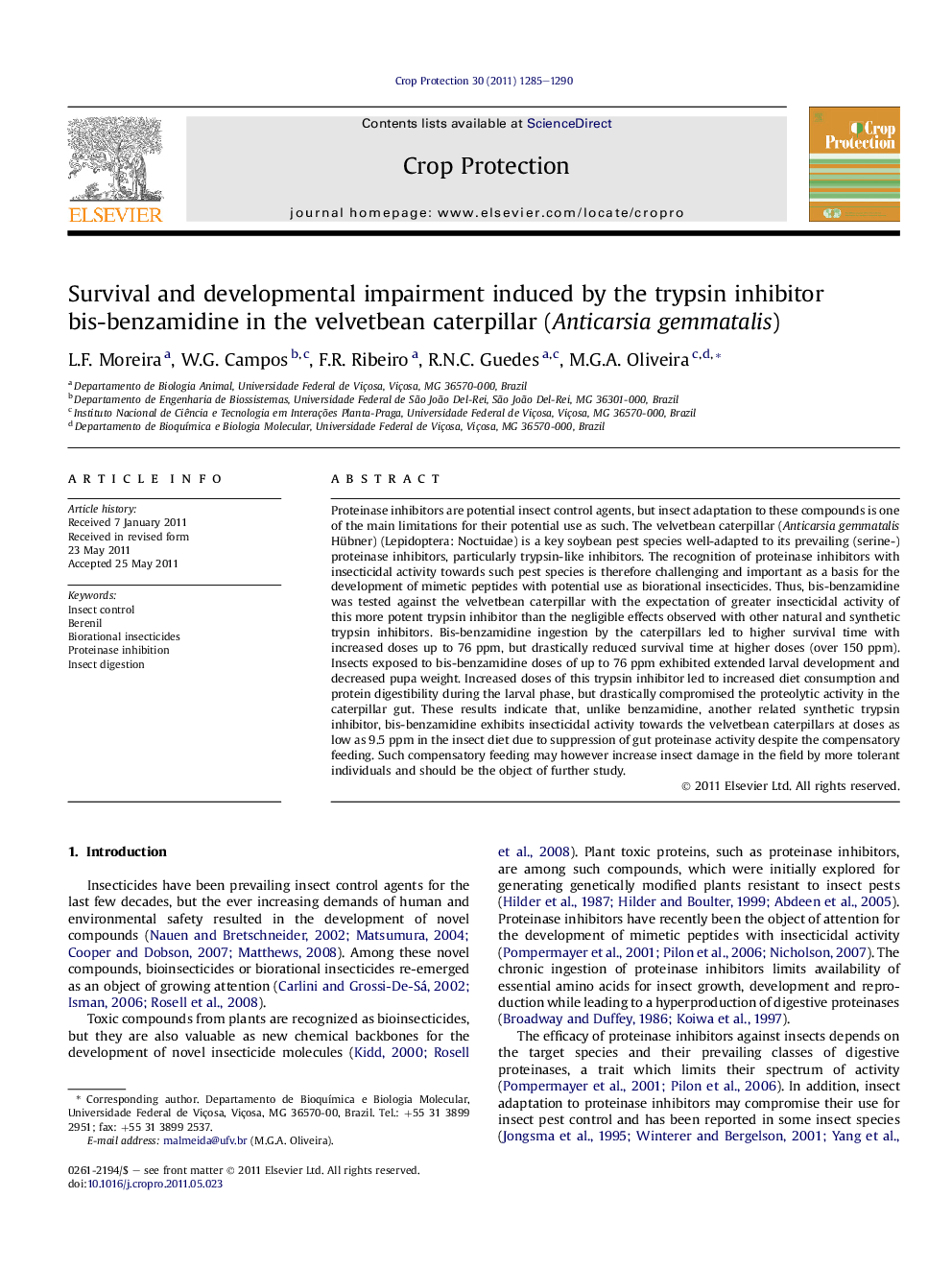| Article ID | Journal | Published Year | Pages | File Type |
|---|---|---|---|---|
| 4506566 | Crop Protection | 2011 | 6 Pages |
Proteinase inhibitors are potential insect control agents, but insect adaptation to these compounds is one of the main limitations for their potential use as such. The velvetbean caterpillar (Anticarsia gemmatalis Hübner) (Lepidoptera: Noctuidae) is a key soybean pest species well-adapted to its prevailing (serine-) proteinase inhibitors, particularly trypsin-like inhibitors. The recognition of proteinase inhibitors with insecticidal activity towards such pest species is therefore challenging and important as a basis for the development of mimetic peptides with potential use as biorational insecticides. Thus, bis-benzamidine was tested against the velvetbean caterpillar with the expectation of greater insecticidal activity of this more potent trypsin inhibitor than the negligible effects observed with other natural and synthetic trypsin inhibitors. Bis-benzamidine ingestion by the caterpillars led to higher survival time with increased doses up to 76 ppm, but drastically reduced survival time at higher doses (over 150 ppm). Insects exposed to bis-benzamidine doses of up to 76 ppm exhibited extended larval development and decreased pupa weight. Increased doses of this trypsin inhibitor led to increased diet consumption and protein digestibility during the larval phase, but drastically compromised the proteolytic activity in the caterpillar gut. These results indicate that, unlike benzamidine, another related synthetic trypsin inhibitor, bis-benzamidine exhibits insecticidal activity towards the velvetbean caterpillars at doses as low as 9.5 ppm in the insect diet due to suppression of gut proteinase activity despite the compensatory feeding. Such compensatory feeding may however increase insect damage in the field by more tolerant individuals and should be the object of further study.
► Low bis-benzamidine doses increased survival time of the caterpillars. ► High bis-benzamidine doses drastically decreased survival time. ► Doses of up to 76.0 ppm extended larval development and decreased pupa weight. ► The trypsin inhibitor increased diet consumption and protein digestibility. ► Bis-benzamidine compromised the proteolytic activity in the caterpillar gut.
